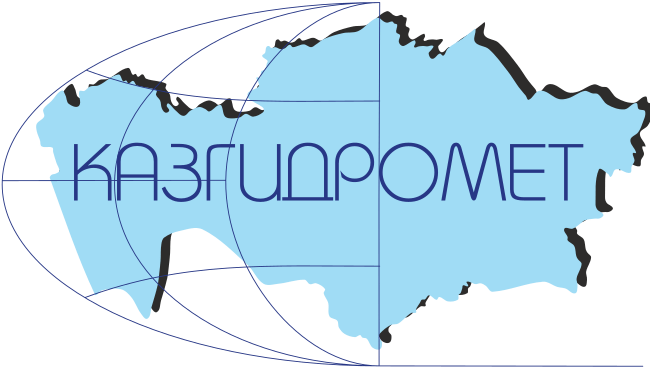ДИНАМИКА ВЫСОТЫ ВОЛН В БУДУЩЕМ В КАЗАХСТАНСКОЙ ЧАСТИ КАСПИЙСКОГО МОРЯ
DOI:
https://doi.org/10.54668/2789-6323-2025-119-4-70-83Ключевые слова:
Каспийское море, волна, высота волны, карты зонированияАннотация
Разработка нефтяных и газовых месторождений в Каспийском регионе, круглогодичное судоходство в море и необходимость сохранения биоразнообразия привели к росту интереса к комплексным исследованиям Каспийского моря, в том числе к изучению ветровых возмущений. Целью данного исследования является изучение процесса образования ветровых волн в море и расчет их пространственных и временных изменений в будущем на основе численного моделирования с использованием спектрально-волновой модели SWAN. Расчеты прогноза высоты волн на период до 2050 года с использованием данных климатической модели из набора данных NEX-GDDP-CMIP6 для двух сценариев выбросов парниковых газов показали, что до 2050 года максимальная высота волн может варьироваться от 1.1 м до 4.0 м при SSP1-2.6 с максимальными значениями в 2023, 2029, 2042 годах; от 1.3 м до 4.1 м при SSP5-8.5 с максимальными значениями в 2029, 2033, 2050 годах. В казахстанской части моря в будущем (в период 2022…2050 гг.) возможны значительные и сильные волны. Поскольку к 2050 году высота волн в средней части Каспийского моря может достигать 6 м, необходимо построить защитные дамбы в районах нефтяных месторождений и населенных пунктов, а также укрепить и реконструировать ранее построенные.
Библиографические ссылки
Ardhuin F., Orfila A. (2018). Wind waves. New Frontiers in operational oceanography, Chapter 14, pp. 393-422 doi:10.17125/gov2018.ch14.
Casas-Prat M., Hemer M.A., Dodet G., Morimm J., Wang X., Mori N., Young I., Erikson L., Kamranzad B., Kumar P., Menen-dez M., Feng Y. (2024). Wind-wave climate changes and their impacts. Nature Reviews Earth and Environment 5, 23–42. doi: 10.1038/s43017-023-00502-0
Zou Q, Chen H. (2017). Wind and Current Effects on Extreme Wave Formation and Breaking. Journal of Physical Oceanography, 47, 1817–1841. doi: 10.1175/JPO-D-16-0183.1
Chen H., Zou Q. (2022). Geometry of Deep and Intermediate Water Breaking Waves Influenced by Wind Speed and Direction. Physics of Fluids, 087126, 13. doi: 10.1063/5.0101943.
Abuzyarov Z.K. (1981). Sea swell and its forecasting. Hydrometeoizdat, 162 p. http://elib.rshu.ru/files_books/pdf/img-417193526.pdf [in Russian]
Abuzyarov Z.K., Shamraev Y.I. (1974). Marine hydrological information and forecasts. Hydrometeoizdat, 218 p. https://korobkaknig.ru/gumanitar_nauka/nauki_o_zemle/morskie-gidrologicheskie-informacii-i-prognozy-35051.html [in Russian]
Abuzyarov Z.K., Dumanskaya I.O., Nesterov E.S. (2009). Operational oceanographic service, IG-SOCIN, 288 p. https://meteoinfo.ru/images/media/books-docs/ocean-monogr.pdf [in Russian]
Nesterov E.S. (2015). Extreme waves in oceans and seas, IG-SOCIN, 64 p. https://meteoinfo.ru/images/media/books-docs/special/nao-nesterov.pdf [in Russian]
Lopatukhin L.I. (2019). Wind-wave climate of the Caspian Sea. Meteorological Research, 47 (5), 89-97. doi:10.29006/1564-2291.JOR-2019.47(5).7 [in Russian]
Myslenkov S.A. (2017). Diagnosis and forecast of wind waves in the coastal zone of the Black Sea. Ph.D. Thesis, Moscow, Russia, 161 p. https://ipfran.ru/files/293/2017-myslenkov-diss.pdf [in Russian]
Pavlova A., Myslenkov S., Arkhipkin V., Surkova G. (2022). Storm surges and storm wind waves in the Caspian Sea in the present and future climate. Civil Engineering Journal. Vol 8, №11. p. 2353-2377. doi: 10.28991/CEJ-2022-08-11-01
Lebedev S.A. (2014). Satellite altimetry of the Caspian Sea. Ph.D. Thesis, Moscow, Russia, 350 p [in Russian]
Lebedev S., Kostianoy A. (2006). Satellite altimetry of the Caspian Sea. Current problems in remote sensing of the Earth from space. Vol.3, No.2, Р. 113–120. http://www.iki.rssi.ru/earth/articles06/vol2-113-120.pdf
. Lavrova O.Yu., Kostyanoy A.G., Lebedev S.A., Mityagina M.I., Ginzburg A.I., Sheremet N.A. (2011). Integrated satellite monitoring of the Russian seas. IKI RAS, 2011, p. 480. [in Russian]
Yaitskaya N.A. (2017). Retrospective analysis of wind waves in the Caspian Sea in the second half of XX - early XXI centuries and the relationship with regional manifestations of climate change. Geographical Bulletin, 2(41), 57-70. doi 10.17072/2079-7877-2017-2-57-70 [in Russian]
Lopatukhin L.I., Yaitskaya N.A. (2019). Wave climate of the Caspian Sea. Wind input data for hydrodynamic modelling and some calculation results. Oceanology. 59 (1), 12-21. doi: 10.31857/S 0030-15745912-21
Lopatukhin L.I., Yaitskaya N.A. (2019). Data of reanalysis of wind fields over the Caspian Sea for calculation of the wind wave regime. Water Resources, 46 (6), 598-604. doi: 10.31857/S0321-0596466598-604
Myslenkov S.A., Arkhipkin V.S., Pavlova A.V., Dobrolyubov S.A. (2018). Wave climate of the Caspian Sea based on modelling data. Meteorology and Hydrology, 10, 60-70. https://istina.msu.ru/publications/article/156853005/
Dobrovolskiy A.D., Zalogin B.S. (1982). Seas of the USSR. Moscow: Moscow State University Publ., 192 p. [in Russian]
Yeltay A., Ivkina N.I., Klove Bjorn (2019). Wind influence on wave height in the Kazakhstan part of the Caspian Sea. Central Asian Journal of Water Resources Research, 5 (1-2), 82-94. doi: 10.29258/CAJWR/2019-R1.v5-1/58-70.eng
Yeltay A., Ivkina N., Narbayeva K. (2023). Verification of the results of the SWAN model for the water area near port Aktau. GEOMATE Journal, 25 (109), 77-84. doi: 10.21660/2023.109.m2305
Yeltay A. (2019). Monitoring of wind waves on the Kazakhstani coast of the Caspian Sea.Modern trends and prospects for the development of hydrometeorology in Russia, Irkutsk, June 5–7, 2019, pp. 172–178. [in Russian]
Mahmoudof D., Takami M. (2022). Numerical study of coastal wave profiles at the sandy beaches of Nowshahr (Southern Caspian Sea). Oceanologia Volume 64, Issue 3, July–September 2022. pp. 457-472.
Kamranzad D., Etemad-Shahidi A, Chegini V. (2016). Sustainability of wave energy resources in southern Caspian Sea. Energy Volume 97, 15 February 2016. pp. 549-559.
Strukov B.S., Zelenko A.A., Resnyansky Yu.D., Martynov S.L. (2012). Verification of the Wind Wave Forecasting System for the Black, Azov and Caspian Seas. Research Activities in Atmospheric and Oceanic Modelling. WCRP Informal Report № 5. CAS/JSC WGNE, Geneva: WMO, 2012. pp. 8.5–8.6. https://meteoinfo.ru/images/misc/sovet/zelenko/avtoreferat_zelenko.pdf
Strukov B.S., Zelenko A.A., Resnyansky Y.D., Martynov S.L. (2013). Wind wave characteristics forecasting system and the results of its testing for the Azov, Black and Caspian Seas. Information Collection № 40 New technologies, models and methods of hydrometeorological forecasts and the results of their operational tests, pp. 64-79 https://meteoinfo.ru/images/misc/sovet/zelenko/avtoreferat_zelenko.pdf
Bruneau N., Toumi R. (2016). A fully-coupled atmosphere-oceаn-wave model of the Caspian Sea. Ocean Modeling. Vol. 107, pp. 97-111. doi: 10.1016/j.ocemod.2016.10.006
Rusu E., Onea F. (2013). Evaluation of the wind and wave energy along the Caspian Sea. Energy, Vol. 20137, pp. 1-14 doi: 10.1016/J.ENERGY.2012.11.044.
Ivkina N.I., Galaeva A.V. (2017). Forecasting of wind waves in the Caspian Sea using the SWAN model. Hydrometeorology and Ecology, 2 (85), 36-45. https://journal.kazhydromet.kz/index.php/kazgidro/article/view/1073
Mammadov R.M. (2014). Hydrometeorological atlas of the Caspian Sea. Baku [in Russian]
(2015). The electronic atlas of the Caspian Sea was developed with the support of the Russian Geographical Society. [Electronic resource]. URL: http://www.geogr.msu.ru/casp/ (date of access 10.10.2023)
Baidin S.S., Kosarev A.N. (1986). Caspian Sea: Hydrology and Hydrochemistry. Nauka, p. 261 [in Russian]
Kerimov A.A., Kosarev A.N., Terziev F.S. (1992). Project "Seas. Hydrometeorology and Hydrochemistry of the Seas". Volume VI Caspian Sea, Issue 1 Hydrometeorological conditions. Hydrometeoizdat, p. 358. https://www.geokniga.org/node/10916 [in Russian]
The Caspian Sea Lotiya, GUNiO (2016). p. 406. https://navysoft.ru
CASPCOM. Caspian Sea Level Information Bulletin No. 23 dated 13 May 2022 [Electronic resource]. URL: http://www.caspcom.com/files/CASPCOM%20Bulletin%20No.%2023_1.pdf. (date of access 15.06.2023)
Nesterov E.S. (2016). Water balance and Caspian Sea level fluctuations. Modelling and Forecasting, Triada. p. 378. http://www.caspianmonitoring.ru/wp-content/uploads/2018/08/8-Nesterov.pdf [in Russian]
Shiklomanov I.A. (1988). Land water resources research: results, problems, prospects, Hydrometeoizdat, p. 152. http://elib.rshu.ru/files_books/pdf/img-09056.pdf [in Russian]
Surface water resources of the USSR (1970). Issue 12, Lower Volga Region and Western Kazakhstan, Vol. 2. Ural-Embinsky district, Hydrometeoizdat, p. 510. http://www.cawater-info.net/library/ussr-water-resources.htm [in Russian]
Annual data on the regime of the Caspian Sea, Kazakhstan coast for 2020 (2022). RSE Kazhydromet, p. 61. https://www.kazhydromet.kz/en/kaspiyskoe-more/ezhegodnye-dannye-o-rezhime-kaspiyskogo-morya
GEBCO [Electronic resource]. URL: https://download.gebco.net/ (date of access 15.09.2021)
Global Daily Downscaled Projections (NEX-GDDP-CMIP6) [Electronic resource]. URL: https://www.nasa.gov/nex/gddp. (date of access 01.02.2023)
SWAN user manual (2024). Netherlands: Delft University of Technology, 146 p. https://swanmodel.sourceforge.io/download/zip/swanuse.pdf
SWAN. Scientific and technical documentation (2024). Netherlands: Delft University of Technology, 168 p. https://swanmodel.sourceforge.io/download/zip/swantech.pdf
Yeltay A., Narbaeva K. (2023). Wind disturbance in the Kazakhstan part of the Caspian Sea. International Conference of Students and Young Scientists “Farabi әlemi”, 3 p. [in Russian]
Law on Subsoil and Subsoil Use of the Republic of Kazakhstan dated 27 December 2017 No. 125-VI [Electronic resource]. URL: https://adilet.zan.kz/rus/docs/K1700000125. (date of access 15.06.2023) [in Russian]
Environmental Law of the Republic of Kazakhstan dated 2 January 2021 No. 400-VI. [Electronic resource]. URL: https://adilet.zan.kz/rus/docs/K2100000400 (date of access 15.06.2023) [in Russian]
Bogoslovsky B.B. (1980). Waves, currents and water masses of reservoirs. Leningrad, p. 58. [in Russian]
Atlas of zoning of seas and oceans for hydrometeorological support of maritime activities (2009). OJSC "Fabrika Offsetnoy Print", p. 43. http://mgmtmo.ru/edumat/normdoc/28_48.pdf [in Russian]
Drobot G.A., Kochetkova E.V. (2009). Ecological problems as a global threat to security, Bulletin of Moscow University, Issue.18, Sociology and Political Science, No.3, p. 61-73. [in Russian]
Загрузки
Опубликован
Как цитировать
Выпуск
Раздел
Лицензия
Copyright (c) 2025 Серик Саиров, Айзат Елтай, Галина Шишкина, Айгерім Құрманғалиева, Лаура Базарбай, Нұрғаным Жағпарова

Это произведение доступно по лицензии Creative Commons «Attribution-NonCommercial» («Атрибуция — Некоммерческое использование») 4.0 Всемирная.





